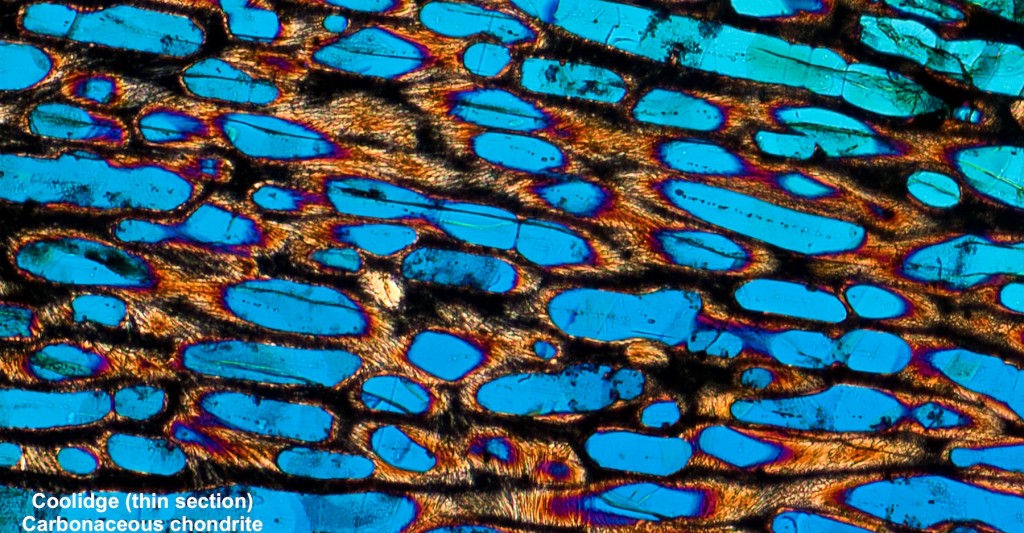Coolidge
Coolidge is a carbonaceous (C4-ungrouped) chondrite found in Kansas in 1937.
According to Meteoritical Society classification, type-4 carbonaceous chondrites mostly have Mg/Si ratios near solar value, oxygen isotope compositions that plot below the terrestrial fractionation line, and abundant metamorphosed chondrules.
At the Buseck Center for Meteorite Studies, collection curator and research professor Laurence Garvie deciphers early Solar System processes through the use of innovative, high-spatial-resolution electron microscopic and spectroscopic studies of meteorites. His studies primarily focus on carbonaceous chondrite meteorites, such as Coolidge, which provide a unique record of the physical and chemical processes that shaped our Solar System.
Photo: Thin section of Coolidge (carbonaceous chondrite) under crossed polarized light. Photo © L. Garvie/BCMS/ASU.
